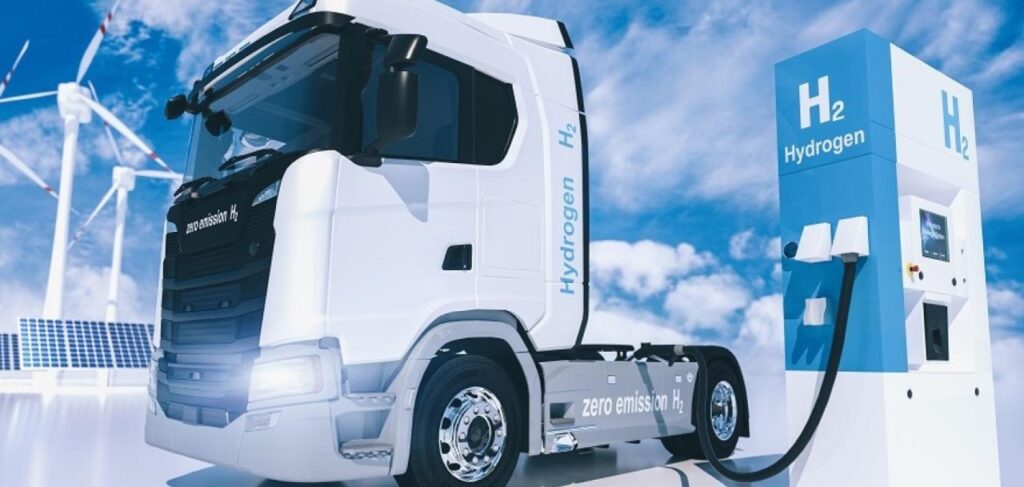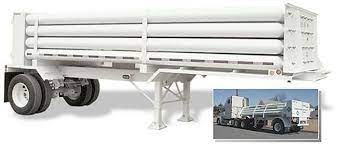
This article is a companion to my recent article about why I think battery electric trucks are the future of freight:
Electric Trucks- the Future of Freight
TL&DR: hydrogen trucks are largely just a retreat position for people who previously thought hydrogen cars were going to be a thing. They won’t be. There is no realistic value proposition for hydrogen trucks, whether powered by fuelcells or, even dumber, by IC engines running on hydrogen.
How We Got Here
We all know, or should know, that the hydrogen fuelcell car is deader than a doornail.
Comparing the Mirai to the Model 3- Tesla Wins
Whereas it looked like the only game in town for cars without a local toxic tailpipe back in the 1990s, the battery EV has come along, sold millions, and driven a nail into the fuelcell EV (FCEV)’s tanks. Fortunately there was just a loud hiss, not an explosion, but the result was the same.
Why Are We Still Talking About Hydrogen Trucks?
Those who were pushing hydrogen cars, weren’t going to just pack up and go home. They retreated into the use case of trucks, arguing the following:
1) Batteries are heavy, and since trucks carry loads which are limited in weight by the total gross weight of the vehicle plus its load, and because hydrogen has better energy density per unit mass, a truck of adequate range to be practical for freight haulers needs hydrogen if it is to be decarbonized.
2) Batteries are intrinsically more efficient than if we were to use electricity to make hydrogen for use as a transport fuel (by roughly a factor of THREE). But if we can make hydrogen cheaply enough, the added effectiveness of faster refueling and longer range will make the inefficiency irrelevant.
3) Hydrogen will be cheap because electricity will be cheap, and hydrogen will be needed for all sorts of things old and new so scale will make hydrogen cheap.
4) The grid can’t handle EVs. But we can put hydrogen in pipes- maybe even in pipes currently used for natural gas. So hydrogen is more practical to distribute than electricity. And hydrogen offers the advantage of energy storage. Storing 3 kWh worth of hydrogen is cheaper than storing 1 kWh worth of electricity in a battery.
This stuff finds its way into studies, largely done by people who benefit from the hydrogen attempt whether it succeeds or fails. And sometimes, by academics who are jumping on the square-wheeled bandwagon- and who haven’t read papers from the likes of Ulf Bossel and Reuel Shinnar from the 1990s, when all the fundamental issues for why there wasn’t going to be a hydrogen economy, were already spelled out, in gory thermodynamic detail.
But hey, let’s take these notions apart, and see if they are valid. Just because we’ve got nothing better to do.
Hydrogen Light, Batteries Heavy, Therefore Hydrogen
As my article about electric trucks points out, per the North American Centre for Freight Efficiency, 75% of freight loads aren’t limited by maximum gross vehicle weight, but by trailer volume or floor area.
Hydrogen’s energy density per unit mass- 33.3 kWh of LHV per kg- is awesome- especially if you forget about the mass of its containers. Those containers are pressure vessels typically designed to withstand 350 bar for trucks, rather than 700 bar for cars. And those tanks, even made cleverly using aluminum bottles over-wrapped with kevlar and carbon fibre, are heavy because they must safely contain an enormous amount of mechanical potential energy. They also have a limited cycle life, just like a battery- you can only safely fill and empty them so many times before they become unsafe, whereas a battery just loses capacity the more you cycle it. So is there really a huge savings to be had, switching from small battery plus fuelcell and hydrogen tanks, to big battery? Not really. And a little extra weight will affect only 25% of loads anyway- many of which are tanker trucks full of fossil fuels.
On the other hand, hydrogen’s energy density per unit volume is not so awesome. Hydrogen at 350 bar is about 21 kg/m3. If you were to feed a 60% efficient fuelcell with hydrogen, the resulting 20 kWh of electrical energy returned per kg x 21 kg/m3 is about 420 kWh/m3, or about 420 Wh/L. That’s almost exactly the same as the Model 3’s battery pack. Except much worse, because the tanks are cylinders with hemispherical heads- they don’t pack together nicely. And no, we’re not expecting BEV tractors to be substantially larger than the diesels they replace, due to battery volume. Getting rid of the diesel components leaves sufficient room for quite a large pack.
Of course you could increase the energy density of hydrogen to 71 kg/m3 by using liquid hydrogen- at 24 degrees above absolute zero. That would unfortunately cost you about 30% of the energy in your hydrogen (making the efficiency markedly worse), but you’d need to put that in via electricity to run the Claude cycle compressors to make that liquid. That’s a pretty terrible tradeoff. And in tanks the size of a tractor trailer tanker, liquid hydrogen boils off at more than 1% per day- in tiny tanks that you might want to put on a truck, the boil-off would be ridiculous. You’d need to burn that hydrogen any time the truck wasn’t demanding it, as its global warming potential (GWP) is 11.5x that of CO2 on the 100 yr time horizon. It’s not toxic, but its flammability and high GWP mean you can’t just vent it like we did in the bad old days.
There is no hydrogen-derived “new LNG” in the future- here’s why!
And no, there’s no solution to these fundamental problems- no magic graphene absorbent that will make hydrogen denser than it is as a liquid. High pressure hydrogen is chosen because of all the bad options for hydrogen storage for transport applications, it is the least bad!
The reality is that hydrogen as a transport fuel is neither efficient nor effective. Its inefficiency makes it structurally expensive, and its ineffectiveness (arising from its low energy density per unit volume) makes it expensive to store, distribute and dispense.
Fundamentally. For reasons you can’t change with innovation.
Efficiency Doesn’t Matter, Therefore Hydrogen
Hydrogen trucks will take three times as much energy from source as BEV trucks to go the same distance- round numbers. You might get that down to two times with massive improvements in both electrolyzers and fuelcells, but that’s about as good as it will ever get. But hey- three times zero is zero, right? If electricity is cheap enough, why would we care about wasting it?
Well…hydrogen is three times as expensive for energy per mile driven. In an industry which charges its customers a fuel surcharge, that alone should be a deal killer. But it’s way, way more than that by the time you’ve figured in the cost of making hydrogen (the equipment and labour needed to convert electricity and water to hydrogen), distribute it to fueling stations, and dispense it.
Hydrogen Distribution and Dispensing Both Suck
Hydrogen’s low energy density per unit volume means that currently, we don’t move or store much hydrogen at all. 92% of hydrogen moves essentially no distance- it’s made right where, and when, it is consumed. Why is that? Because it’s cheaper to move whatever we’re going to make the hydrogen from, to where hydrogen is needed. There are some hydrogen pipelines, but they exist more for outage prevention, to connect a bunch of hydrogen reformers to a bunch of refineries and chemical plants within a short distance from one another.
And no, it ain’t so simple to just switch which gas we put in the natural gas transmission network. That’s just not on, despite how hard the people who own that network, are selling you on the idea (because the alternative is to admit they’re going out of business).
Hydrogen to Replace Natural Gas? Forget About It!
What about tube trailers? Oh yeah, just forget those. A full Class 8 DOT certified tube trailer contains 380 kg of hydrogen.

A full Class 8 DOT certified gasoline or diesel tanker contains 11,000 gallons of these fuels- and to a 1st approximation, 1 kg of H2 is about the same LHV as 1 gallon of gasoline or diesel. That means we’re looking at around 30 tube trailers for hydrogen for every one tanker of diesel we delivery today. Yes, there are people working on composite tube trailers which would run at higher pressures. Sadly, they’ve been leaking and catching fire. But one day, they might drop that to ten trailers instead of thirty. Still deader than doornail as a distribution method!
Everybody has a model in their head of hydrogen refueling as being as simple as plugging a hose into the truck and turning a valve. That’s of course far simpler than reality. Reality is hiding behind the curtain, and there’s a lot of complexity there. First, you need to get the gas there, and as discussed above, that’s hard and expensive, because it implies either building new, bespoke hydrogen pipelines from some large scale centralized hydrogen production facility- in North Africa, say- and then distributing that hydrogen to every refueling station. Or else you’re talking about distributing three times as much electricity to each refueling station and then running comparatively tiny electrolyzers at each one. The problem with tiny electrolyzers is that they are fundamentally incapable of ever making cheap hydrogen. And of course they make the grid problem, three times as hard as if we just used BEVs instead!
Breakthrough in Electrolyzer Efficiency!
Even once it’s on site, you need to compress it to 350 bar. And because the tanks on the truck are composite tanks, they can’t handle much heat. So you need to chill the hydrogen so that as it expands and heats up (a weird property that it shares with helium), it doesn’t cook the tank it’s being fed into. Want to do that fast? You need a really big chiller. And it needs to be sitting there on standby in case a truck rolls up and needs refueling.
I’ve been involved in designing hydrogen storage and dispensing systems, and I can tell you that anybody who thinks that the capital cost for hydrogen refueling is going to be lower than that for megawatt chargers, has another thing coming.
Faster Refueling- Really?
The reality is that hydrogen refueling also gets harder the larger the vehicle you intend to refuel. So whereas you might refill a Tesla Semi from 20% to 80% battery state of charge (SOC) in ~30 minutes using a megawatt scale charger, the best you’re going to do with a hydrogen truck in practical terms is around 20 minutes on the pump. Not five. And no, it will absolutely not be faster if you use liquid hydrogen, either.
Hmm: (much) more than three times as much energy cost, in return for saving 20 minutes of refueling. Yes, I know that 20 minutes of truck and driver productivity are worth money- but are they worth that much money?
But You Can Store Hydrogen!
Yeah, and the battery on the truck is what, chopped liver?
The notion that hydrogen storage onsite at refueling stations, plus intermittent operation of electrolyzers on site, will save demand charges that would drive up the cost per kWh of BEV charging is also popular. But the notion that it’s worth throwing away 2 out of every 3 kWh you feed such a system, just to store energy, is very questionable indeed. Worst case, megawatt chargers would need to be paired with larger grid storage batteries on site, which would do the same thing as hydrogen would, but at 90% instead of 33% efficiency! And of course any time you operate an expensive asset like an electrolyzer intermittently, its cost per kg of product goes up- way up.
Scale Will Make All Problems Go Away!
No, folks, it won’t.
First, most of the “hydrogen economy” rubbish is just as dumb as hydrogen for transport. So while I do see a great need for green hydrogen to replace the black stuff that’s keeping us alive and fed via ammonia production etc., and a few new uses to decarbonize iron production (also an existing use of hydrogen that just needs expanding),
I don’t see a hydrogen economy coming.
Ever.
Transport fuel use of hydrogen is only one of several dumb use cases being proposed, but yeah, it’s a real stinker.
Yes, scale will help make electrolyzers and fuelcells cheaper. No, electrolyzers aren’t going to get as cheap as some are dreaming, because they don’t understand economy of scale and Wright’s Law properly- and I do, because I spent decades as a specialist in scaling up chemical processes and equipment.
And while scale will help with fuelcells just like it will help with electrolyzer stacks, not their balance of plant, without the scale of cars and light trucks, there simply won’t be sufficient doublings available to make fuelcells cheap enough if we use them only in class 8 trucks and heavy equipment.
And no, we won’t be using them in aircraft, either. Talk to Bernard van Dijk about that- he’s one of my co-founders of the Hydrogen Science Coalition, and he’s forgotten more about aircraft than I’ll ever know.
Hydrogen for Aircraft- HSC Explainer Video
Nor for ships.
Nor for stationary power.
No, scale won’t come to the rescue here. Hydrogen as a transport fuel is just broken. It’s a cart with square wheels.

The Bottom Line
Battery electric trucks aren’t a pin for pin replacement for diesels. And thank goodness! They drop GHG and toxic emissions, are easier to drive (no 18 gear transmissions), quieter, and will have less maintenance (particularly for brakes). But that will leave some transport truck use cases, unserved. Can hydrogen fill those, at least?
Let’s consider remote and rural transport. The example I like to use is ice road trucks which resupply First Nations communities in northern Canada. They’re not going electric, for sure. Are those going hydrogen?
Forget about it. Fuel logistics kills the idea deader than a doornail.
Remember those tube trailers?
Nope. Those will either need to keep running on fossil diesel, or if we’re worried about the 3/4 of eff all GHG emissions that are produced by that tiny fraction of tonne-miles of freight, we can make them use biodiesel instead. That would work, and would cost only modestly more than fossils. Hydrogen wouldn’t work, period.
What about Hydrogen Engines?
Hydrogen engines make all this stuff worse. Fuelcells are selected, despite extra cost, because they are more efficient and hence lessen hydrogen’s problems of cost and energy density per unit volume. Engines don’t help, and hydrogen engines will generate both particulate emissions from combustion of lubricant oils in the engine, and NOx- the inevitable result of burning anything in air.
This excellent video talks about Toyota’s hydrogen car engine, and how ridiculous it is, in unambiguous and clear terms, with all calculations provided.
The Unbearable Lightness of Hydrogen
What About E-Fuels?
In a recent debate, where I basically cleaned the floor with the arguments of the executive director of the Canadian Hydrogen and Fuelcell Alliance, the great hope apparently isn’t for hydrogen, but for hydrogen-derived fuels- so called e-fuels such as ammonia or methanol. These are all attempts to a) keep using engines b) make hydrogen more effective, but also c) make hydrogen even less efficient. And I freely admit, for aircraft and ships, we might be so desperate, and sufficiently rich, to reach for some e-fuels- or, at least, to use green hydrogen to run the hydrogenolysis reactions necessary to make drop-in fuels out of biomass. We’ll need to be rich though. And for land transport, where BEVs are a real alternative that is cheaper in energy cost than fossils already, that just makes no sense to me at all. E-fuels for land transport are really the sport of Porsche owners- because only Porsche owners will be able to afford them.
Ammonia as a transport fuel is horrifying. I spent decades designing and building systems which handle and store chemicals, sometimes chemicals so hazardous that they make ammonia look like mother’s milk. But ammonia isn’t just a poison gas, with a concentration immediately dangerous to life and health (IDLH) of only 300 ppm- it’s also extremely corrosive to eyes, the linings of the mouth, nose and throat, ears etc. etc. One tanker truck of ammonia in 1970s Houston was the cause of Houston’s most serious chemical incident in its history. One tanker, scores of deaths and grievous injuries. Anybody recommending ammonia as a vehicle fuel had better be ready to put on their level A pressurized SCBA chemical protection suit and go in there to repair a leak, or they’d better shut up about it right quick. I know I’m not- I’ve been in one of those suits. Truck transport with ammonia would be bad, but ammonia to fuel ships at sea is, to me, next level idiocy.
I don’t think we’ll even need biofuels here. It’s a certainty to me that virtually every use case for land vehicles is going electric. For the better.
Disclaimer: I’m human, and I make mistakes even when I don’t write my articles with a glass of home-made scrumpy in hand. Point out where I’ve gone wrong, with references, and I’ll gladly correct my work.
If however you just don’t like what I’ve written because I’ve sh*t on your company’s precious idea, feel free to contact my employer, Spitfire Research Inc. They’ll be more than happy to tell you to piss off and write your own article. Or, just block me- that’ll be your loss.
